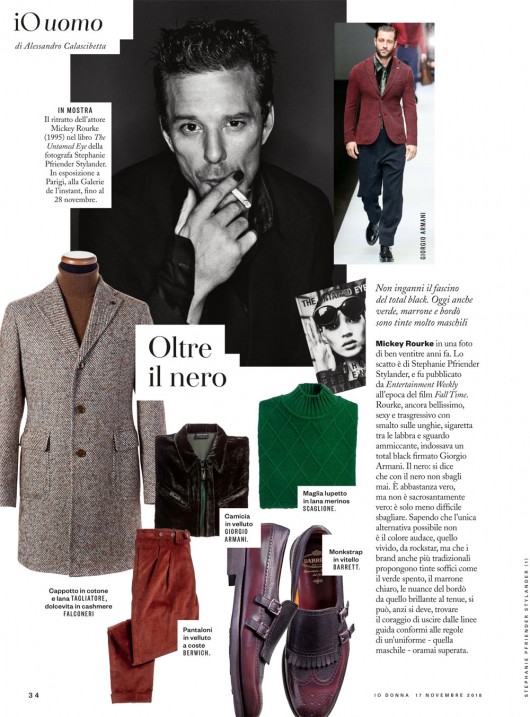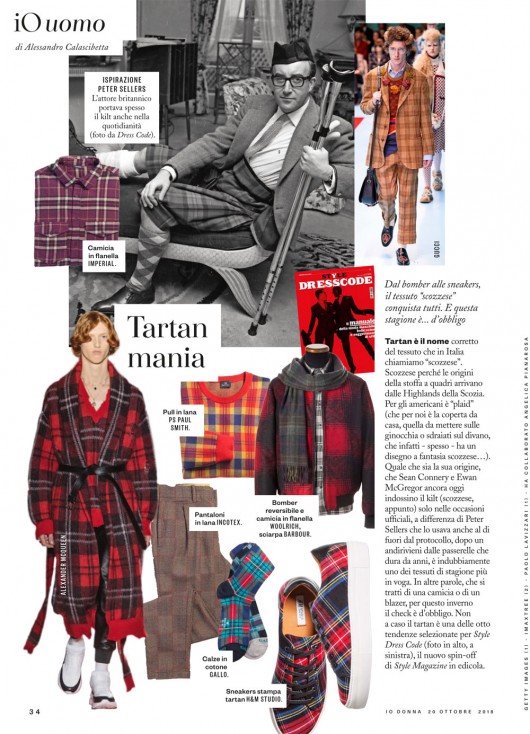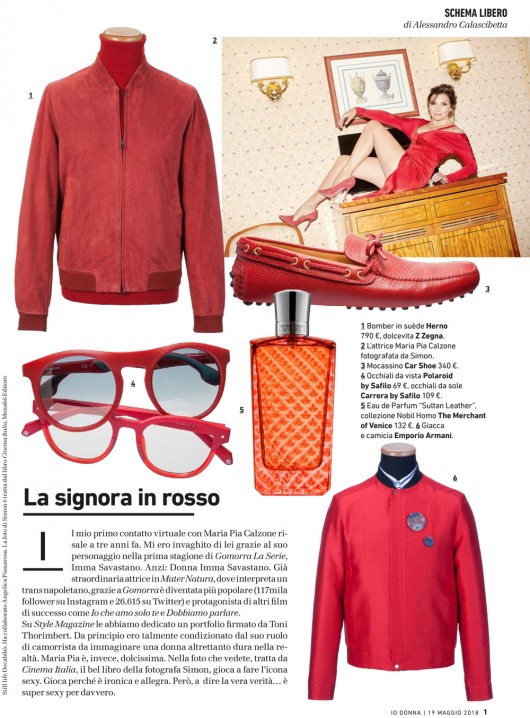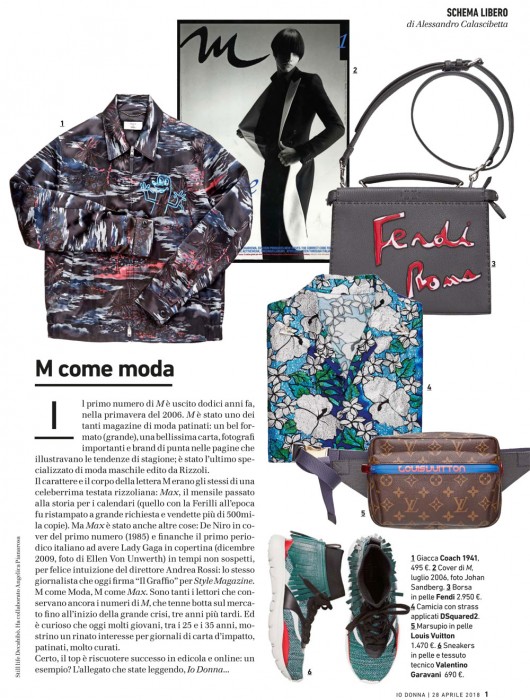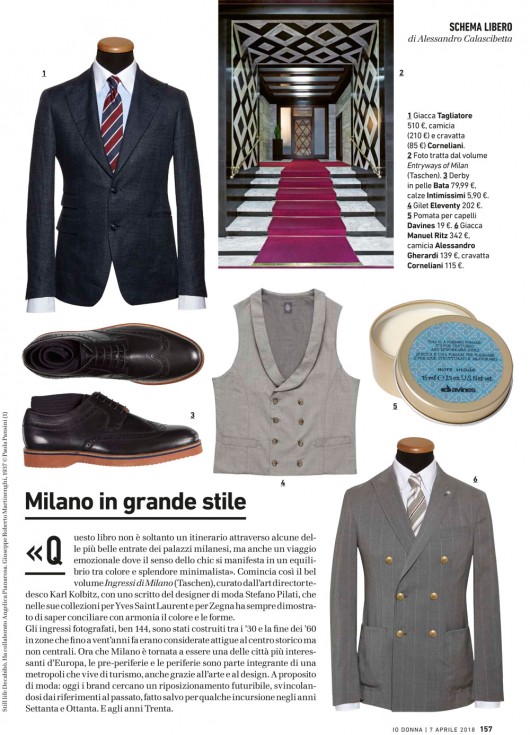IO UOMO – OLTRE IL NERO
Beyond black. Mickey Rourke in a shot of 23 years ago by Stephanie Pfriender Stylander, published by Entertainment Weekly when the movie Fall Time was out in cinemas. Rourke, still handsome, sexy and transgressive, with nail enamel, cigarette and alluring gaze, was wearing a total black look by Giorgio Armani. Black: it is said that you never go wrong with black. It is almost true, but not completely: it’s just less easy to fail. Considering that the only possible alternative is not the bright, showy color, for rockstars, but even the most traditional brands suggest soft shades like dull green, light brown, burgundy, it’s possible (well, it’s a duty actually) to find the courage to abandon the guidelines compliant with rules of a way of dressing that’s obsolete by now.





